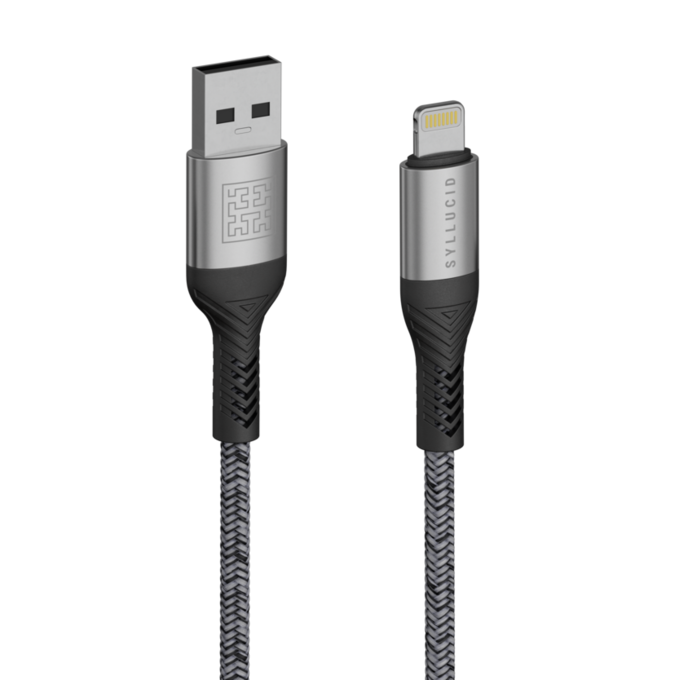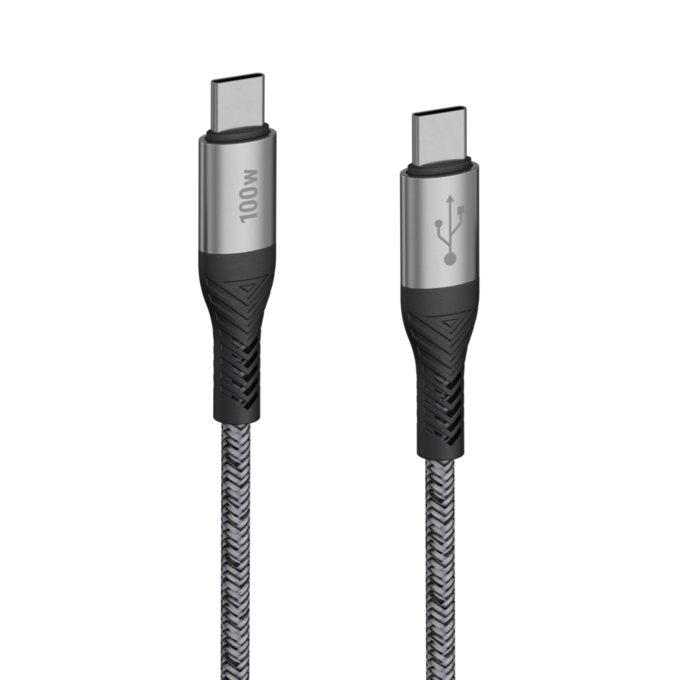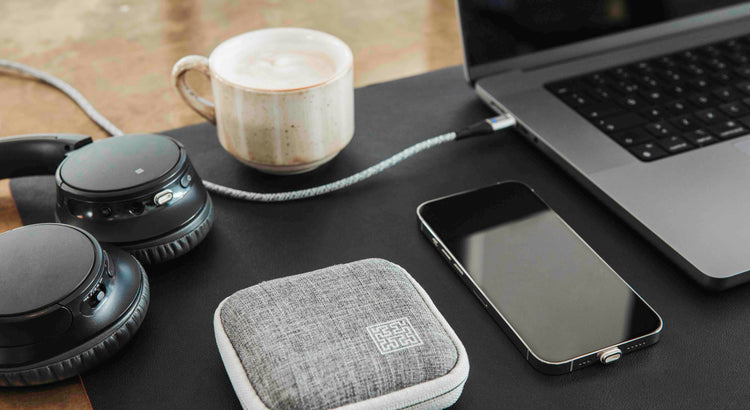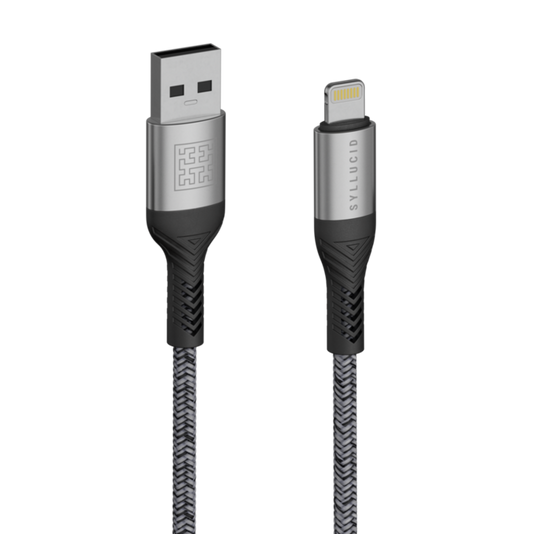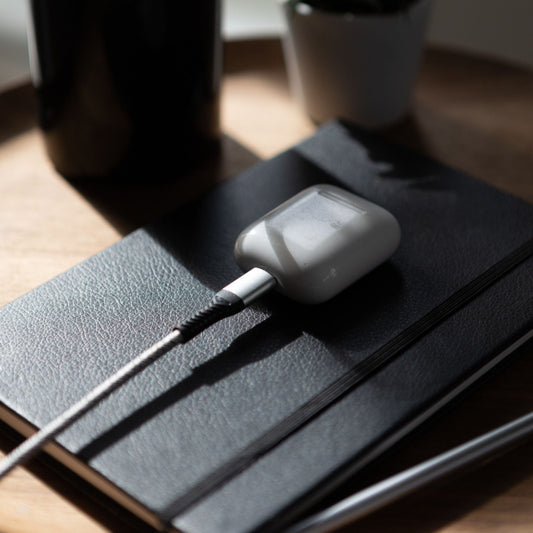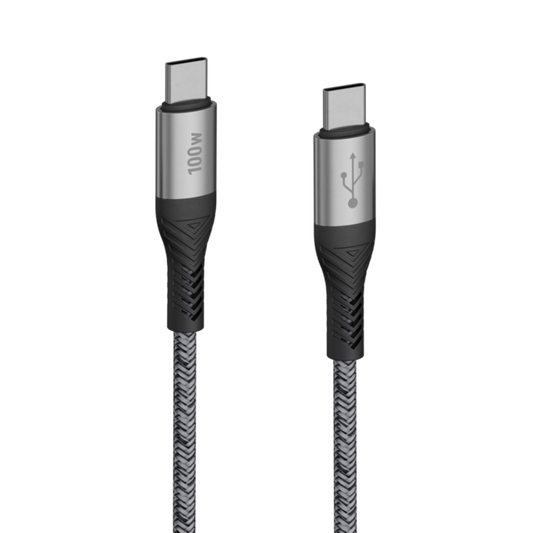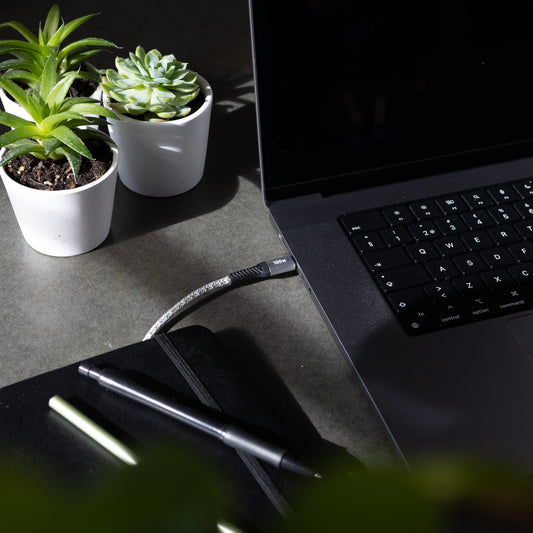The longer your electronics last, the better they are for the planet.
Did you know that the carbon footprint of 1kg of cables is an estimated three times as much carbon emissions? Not to mention the impact on people in the supply chain and on mined land (read about the climate impact of mining here).
Charging cables can be designed to last longer but some manufacturers choose lower quality for their cables to save costs and because it means you’ll have to buy twice (see more about planned obsolescence here).
Here are five things to look out for to make sure you’re buying the most durable iPhone charger or USB-C cable for android:
- A bend protector makes a cable more durable and it protects the most vulnerable part of the cable from dangerous bends that can break it.
- A braided coating is a structure that better protects the wires inside.
-
Thicker conductive wires will make the cable look slightly thicker which means there is more protection from breaking.
-
Gold plated connectors offer the best long term protection from corrosion and stay conductive even after years of use because unlike other metals, gold does not get an oxidation layer that stops it from conducting electricity.
- A reinforced core inside of the wire with nylon or aramid fibres adds an additional layer of strength that protects the cable from breaking.
- The number of bends is a quantitative measure for quality testing. This measure means it’s much more durable. 10k bends means it’ll stand the test of time.
- Bonus: a cable tie or travel case keeps your cable organised, and means it does get pulled around in a backpack or rolled over on the floor by an unruly office chair.
Our cables are designed in Amsterdam and responsibly made in China with the highest specs, leading technology and quality design materials including all of the above durability elements.
Starting with the everyday charging cable, we can make a more positive impact on our world by choosing better electronics.
For more tips, check out our ultimate guide to buying a USB cable.
Let’s make planned obsolescence obsolete and choose quality over quantity!
